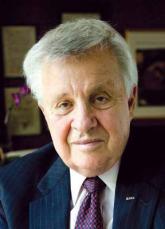Commentary


We do not yet have a complete understanding of the social histories for either Tashfeen Malik or her husband, Syed Farook, the two identified shooters involved in the San Bernardino, Calif., attack. But news reports that have trickled in indicate there should be no question as to whether or not these were two radicalized individuals who had dreamed of carrying out an act of violent jihad. In fact, reports suggest that these two fantasized about fighting on the side of radical Islam several years before the events in San Bernardino unfolded.
Though she was born in Pakistan, Tashfeen Malik reportedly spent her formative childhood and adolescent years living in Saudi Arabia with her family, where her father worked as an engineer. By the time she returned to Pakistan and began attending university, she was no longer the “modern” girl that some family members had recalled her being in her youth; instead, she spoke Arabic as opposed to Urdu, and she kept her face covered with a veil even though she was attending a progressive university where few women wore veils at all.
She also began attending a local madrassa that was notorious for preaching an ultraconservative version of Islam and for reported links to violent Islamic extremists. We do not know exactly when the initial seeds of radicalization were planted in her life, but we do know that by the time she was carrying out an attack on the Inland Regional Center in San Bernardino that left 14 people dead, she was pledging her allegiance to ISIS leader Abu Bakr al-Baghdadi on Facebook.
Similarly, we do not yet know the complete details of Syed Farook’s path to radicalization, but apparently he had taken an interest in radical Islam several years before the attack in San Bernardino. In 2007, Farook reportedly introduced his close friend and neighbor, Enrique Marquez Jr., who recently had converted to Islam at the urging of Farook, to the radical teachings of Anwar al-Awlaki. The two friends also spent time reading al-Qaeda’s online Internet magazine, Inspire, and watching online videos posted by Somali Islamic terror group al-Shabaab. By 2011, the friends had familiarized themselves with bomb-making recipes found in Inspire magazine and were making plans to carry out attacks. It was Marquez who reportedly bought the rifles used in the San Bernardino attack, and he is facing several charges tied to those alleged actions. Though the pair never followed through on these plans, the violent fantasy remained for Farook.
Who is vulnerable to radicalization?
Let us consider the set of personality characteristics that make some individuals more prone than others to the lure of the radical Internet. In our July 2015 article in Clinical Psychiatry News titled, “Underlying psychology of ‘lone wolf’ terrorism is complex,” we reported upon on our study of the psychology of lone wolf terrorists. After an extensive review of available biographical information of known lone wolf terrorists, we identified several common psychological features that appear to be prevalent among the lone wolf population.
They tend to be isolated loners with fractured family relationships who find a sense of belonging in the virtual community of hatred. The radical sermons emphasize the common suffering of Muslims and magnify resentment of the Western world. Should they lose their lives while striking out against the oppressors, they will rise to a higher place in paradise. Thus, there is a compensatory narcissistic grandiosity, which will lead some to seek to go out in a “blaze of glory.”
The family dynamics of two prominent lone wolf terrorists suggested a generational provenance. The so-called underwear bomber was the son of the former chairman of the First Bank of Nigeria, who was extremely wealthy and not particularly religious. He, on the other hand, was very pious and was teased in school for his religiosity, being nicknamed “the Pope.” He became increasingly incensed about his father’s lack of piousness, and criticized him for eating meat that was not halal (slaughtered according to Islamic requirements). When he broke from his family, refusing to join them at the dinner table, it was sufficiently alarming to the father that he reported it to U.S. authorities. Similar dynamics were present for the Times Square bomber, Faisal Shahzad. On the surface, he reportedly appeared to be doing well in American society; he had a bachelor of arts degree in computer applications and information systems, and a master’s degree in business administration, and was working as an analyst at the Affinion Group. However, as he became increasingly religious, he forced his wife to wear a hijab (head scarf) and became estranged from his father, a senior Pakistani military officer who drank and was not religious.

